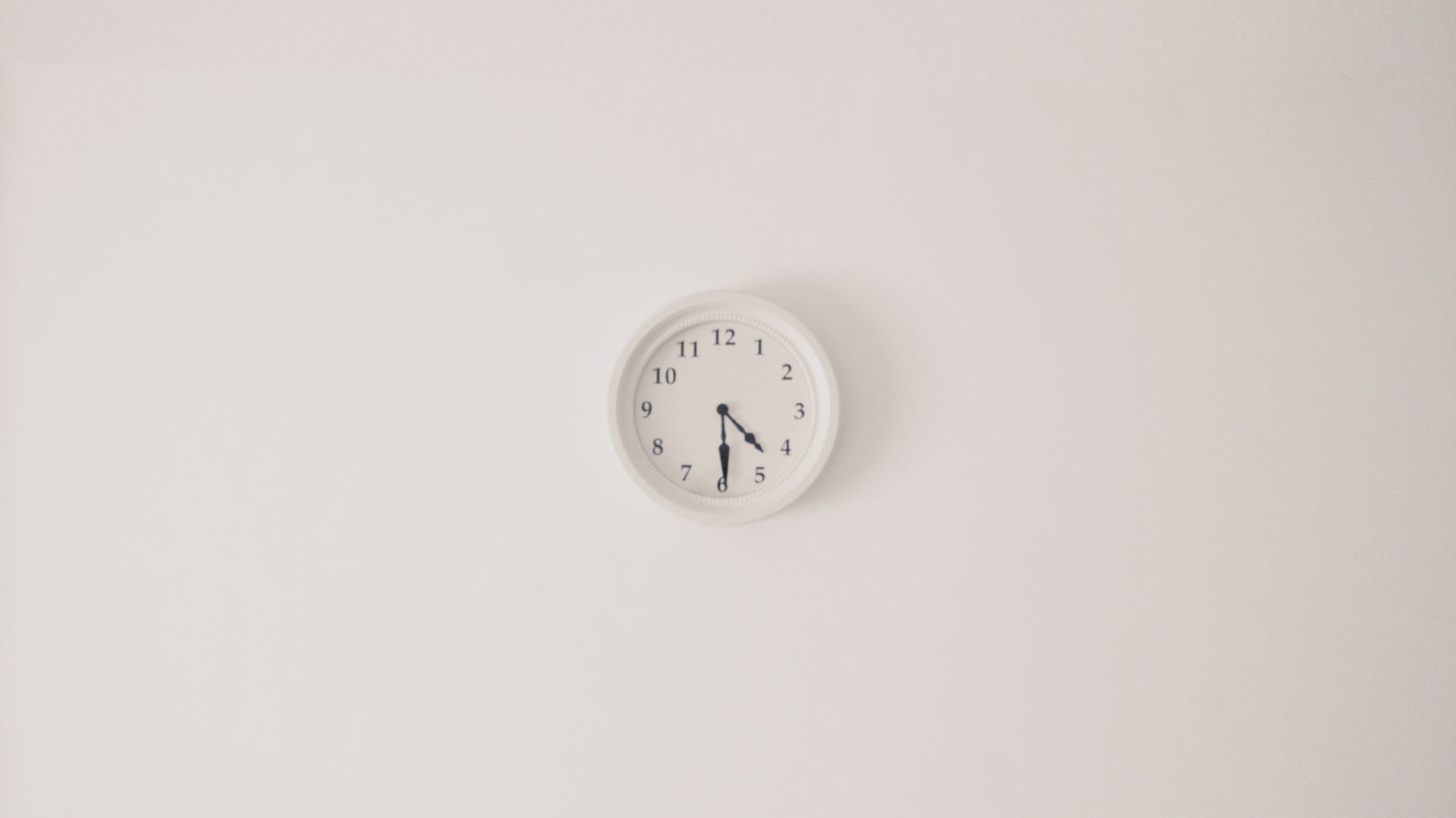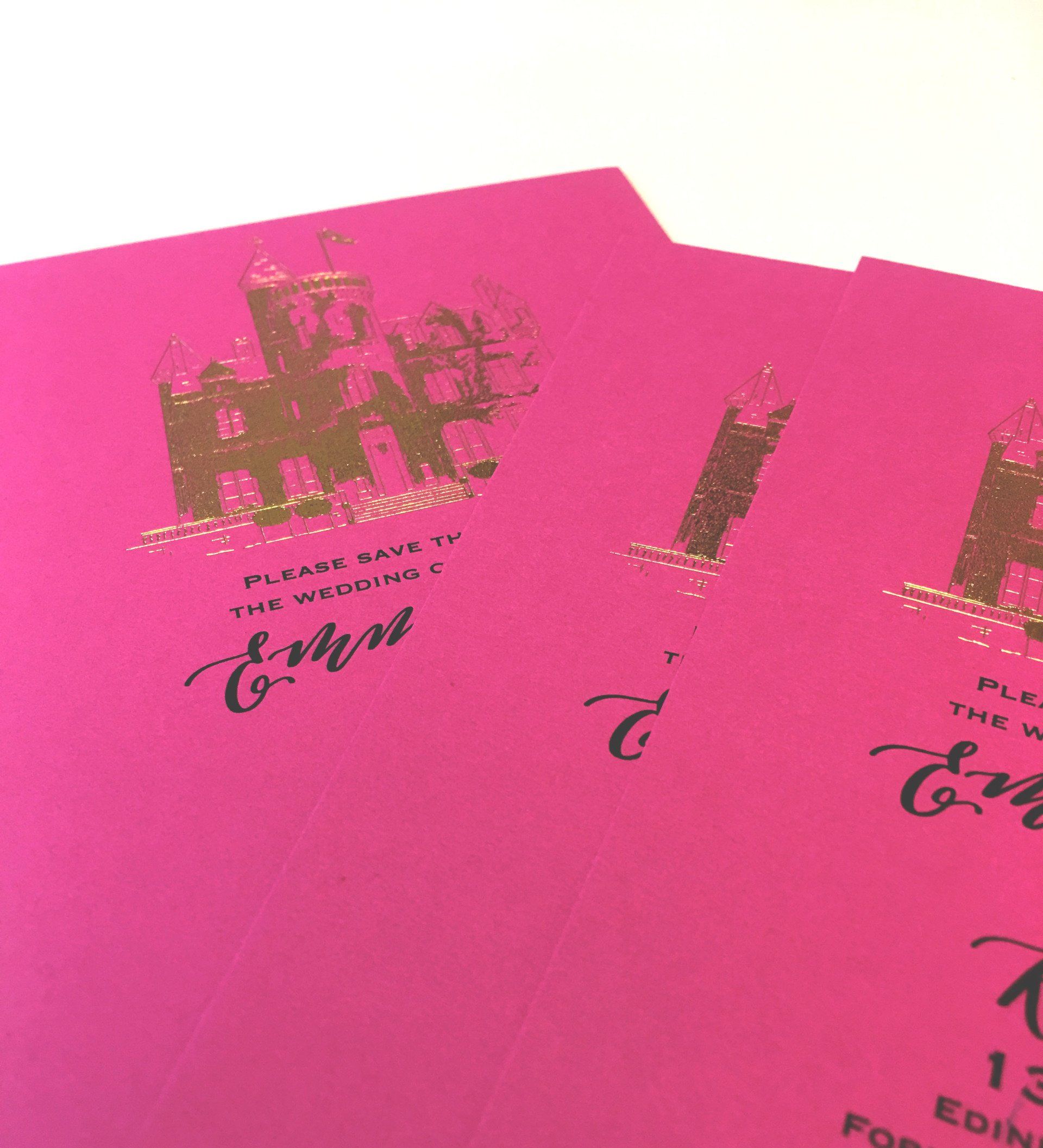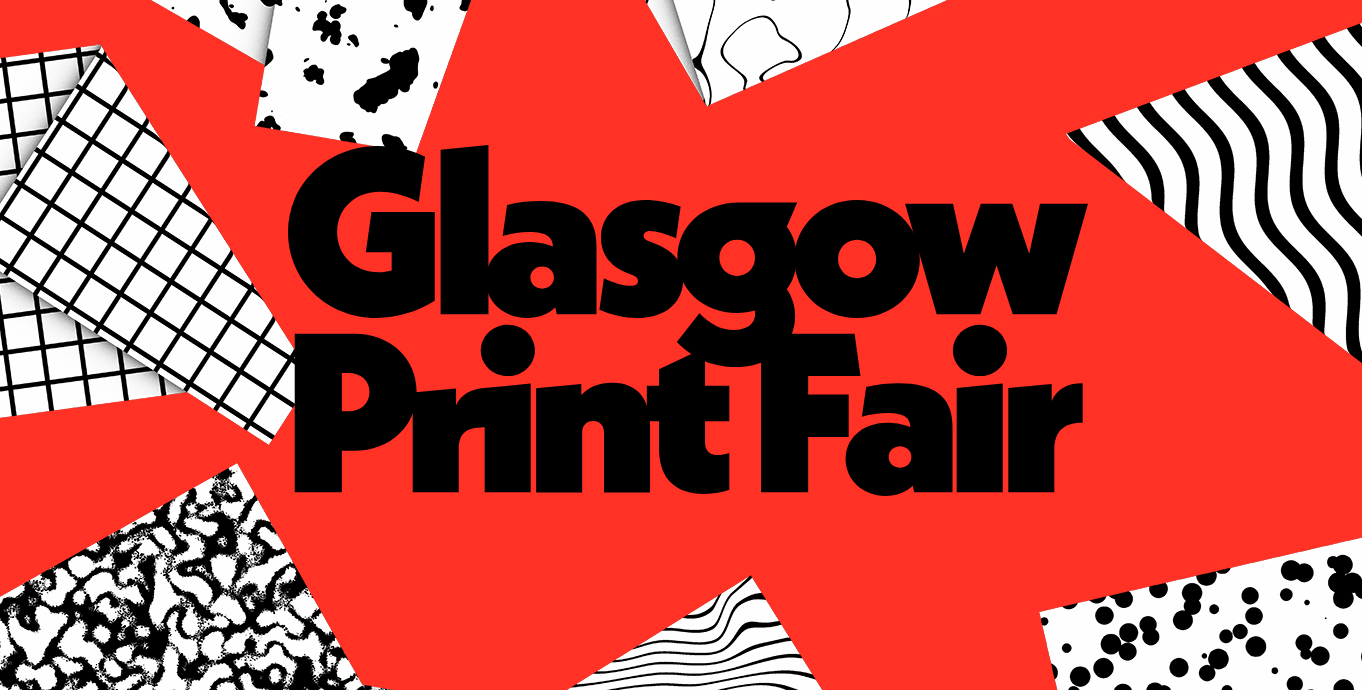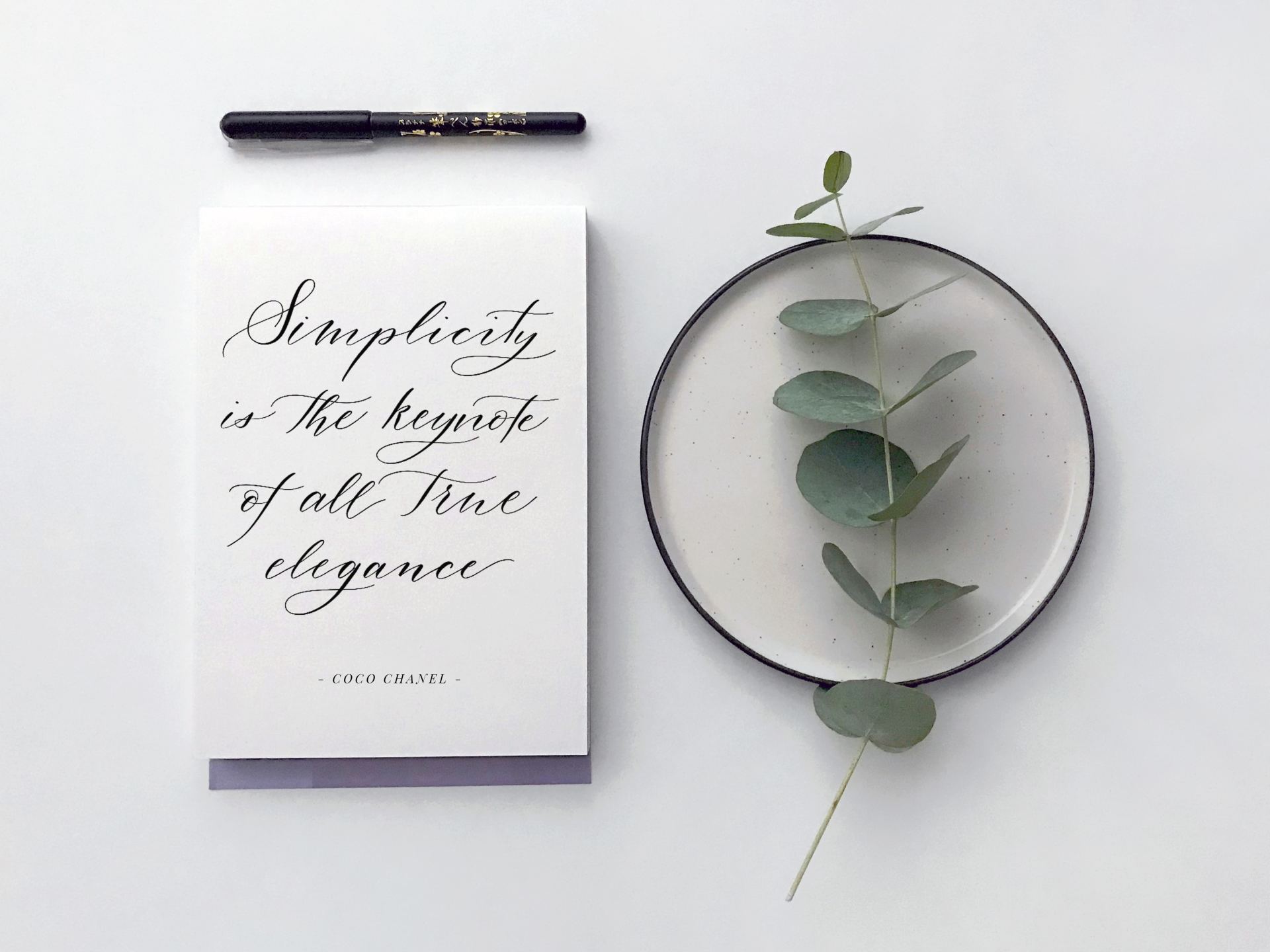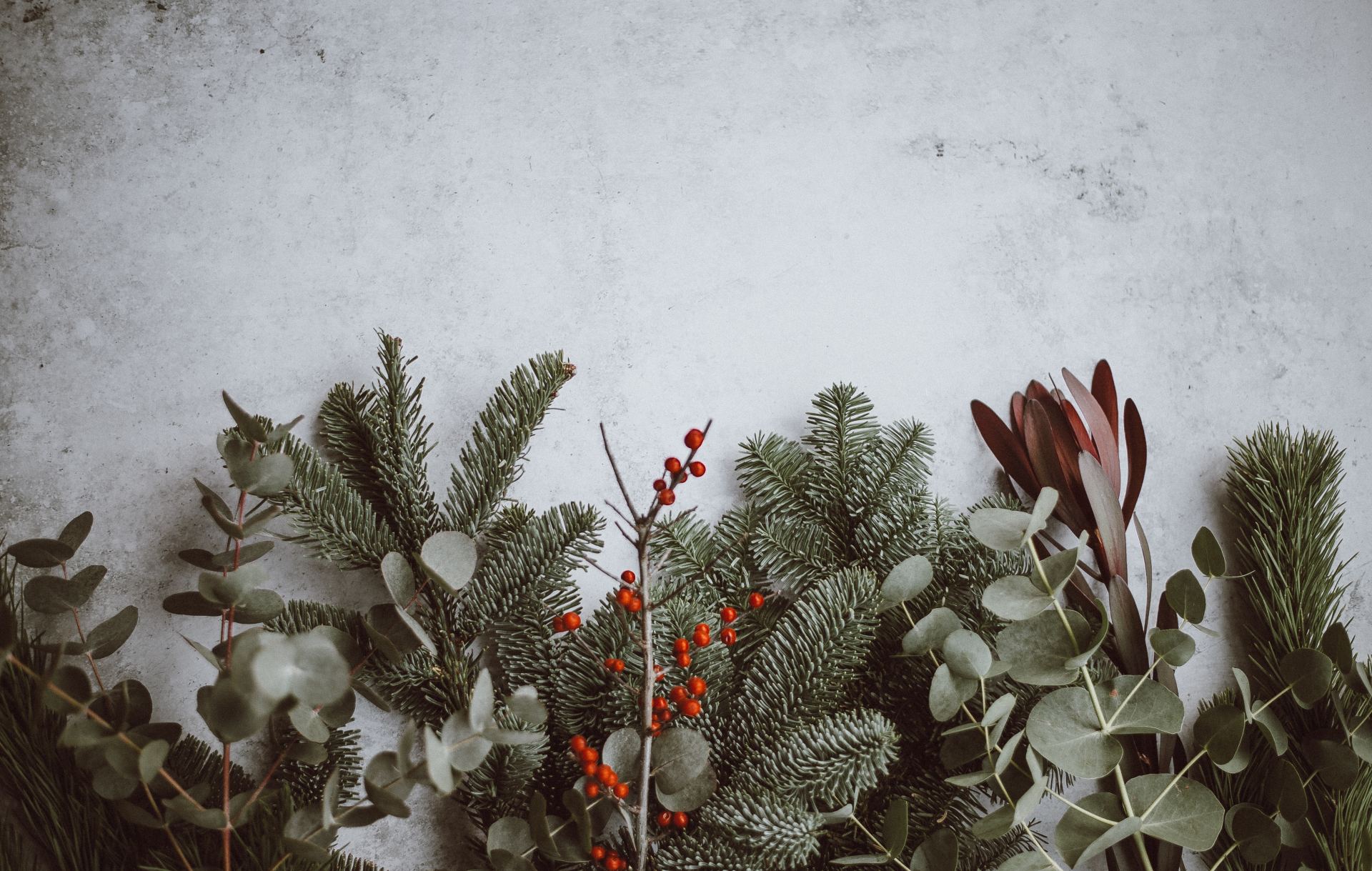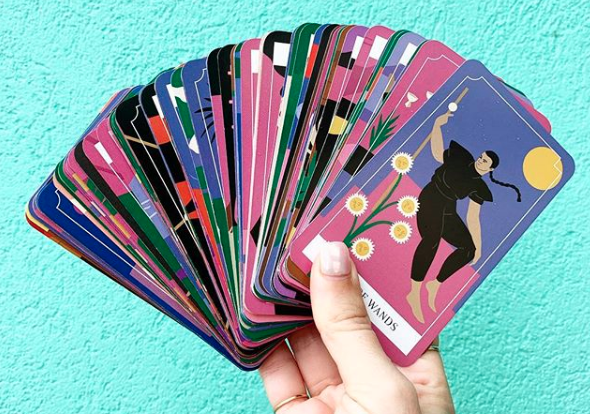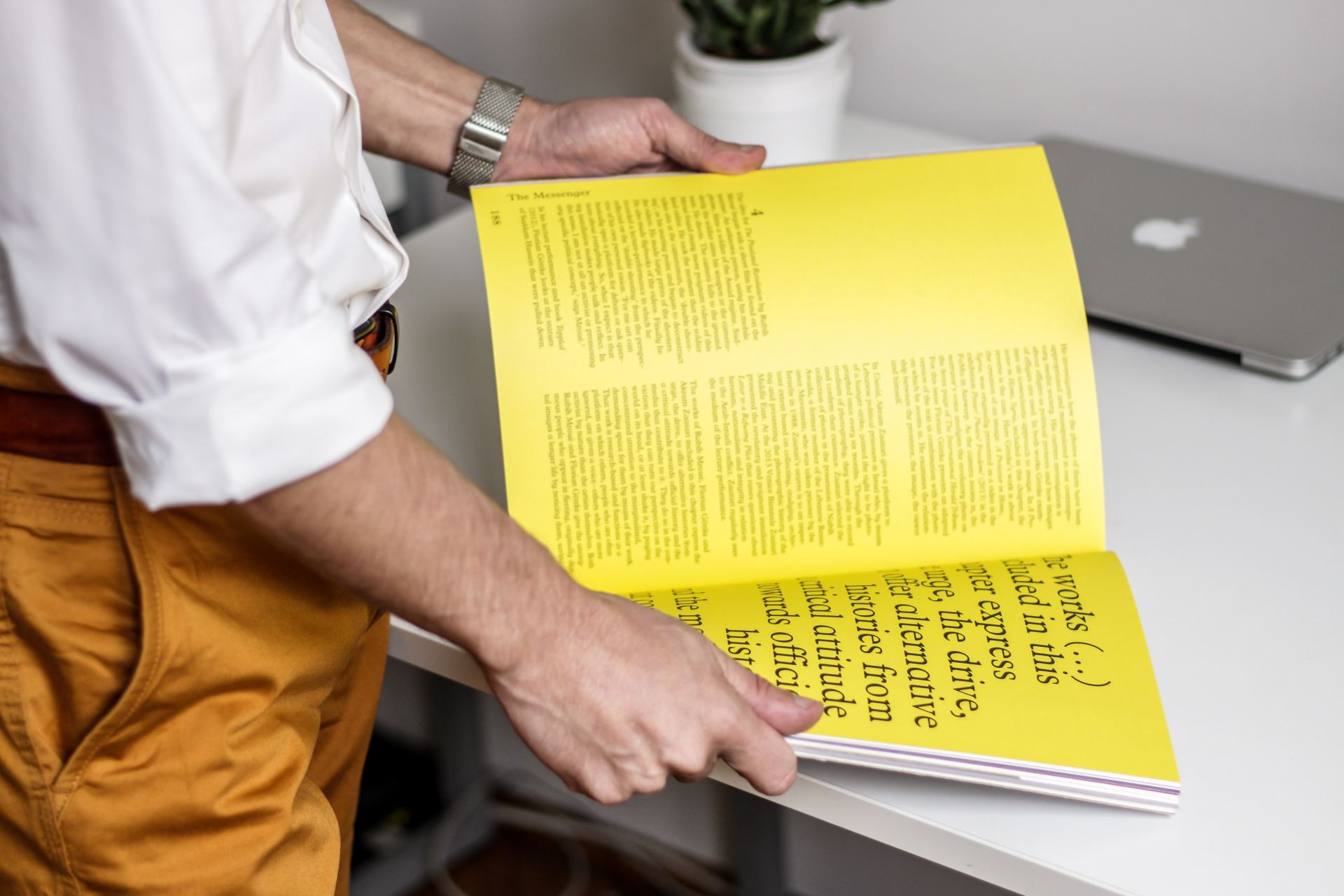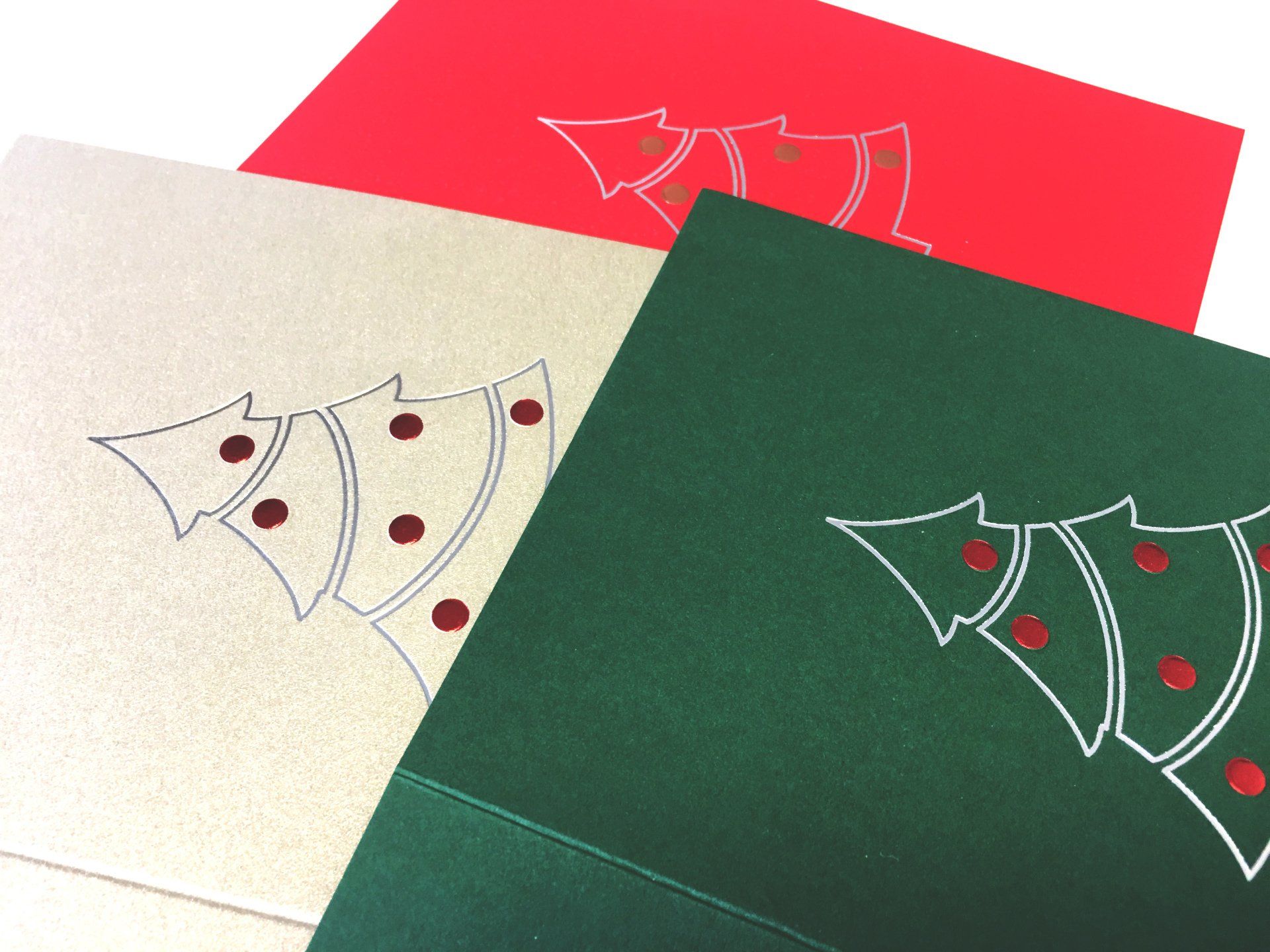In a bind.
Marketing . • August 26, 2019
It’s easy to feel that once you have all the content finalised for your publication you’re off the hook, but there is one last decision that can really change the quality of your finished product. How you choose to bind can greatly affect your production costs, durability and the overall character of your publication. Let’s break down the main contenders.

Saddle Stitched Binding
This is probably the most economical choice of binding. Wire is pierced through the outer spine of the book and is bent inside the centre pages to grip the rest down. Although not quite the same this will achieve a similar finished look to staple binding; which works best for leaflets or brochures of relatively few pages.
Perfect Binding
This is most commonly seen in books or publications that have a higher volume of pages. The pages are grouped, with the edges being roughened up to create a better texture to fix the groups to a cardboard spine with glue. This cover will then be scored in two places so opening and closing is nice and easy. Perfect binding can be done pretty quickly and reasonably inexpensively.
Coil Binding
Coil binding can be super speedy, and allows the publication to lie good and flat. This is practical for diaries or calendars or sketchbooks; things that will be written or drawn in. It’s important to take into consideration the aesthetics of coil binding, it’s not exactly subtle. However, choosing the right colour can help reinforce brand colours or make your cover page pop. Wire is the most popular material used for coil binding, however at L & H we would recommend plastic. It won’t get misshapen or squashed in someone’s bag and there is a better choice of colour. Don’t worry- they’re recyclable too.
Sewn Binding
This type of binding is the dream really, it’s high quality and feels very professional. Sewn binding starts similarly to perfect
in that pages are grouped together. Before they are glued to the cover they are sewn through the centre. Choosing sewn over perfect binding ensures that your publication will be more hardy and have a longer lifespan! This method is typically used for fine books, comics and artsy books.
We hope this helps you get your ahead around things. We are always more than happy to help so give us a buzz if you want to see what we can offer or just need some good advice.

